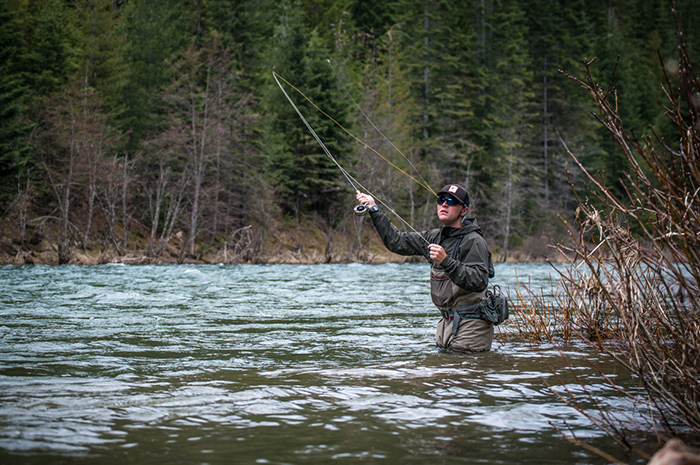The USGS Gauge Is Not the Boss
Sean Visintainer - 03/30/21

Diversify your abilities
Pre-runoff and runoff itself are the main times of the year that river flows are a big part of the fishing success equation.
However, many anglers let the numbers on the graph dictate their fishing trips to the point of missing out on many great opportunities for success as well as learning something new.
Let's go over my thoughts about regional rivers when they are seeing increases in flows.
The big myth:
- Just because a river is rising means it's not fishable. Not true. Some rivers, not all, can still fish fairly well as the water is on the rise. In particular, the three rivers that can fish while levels are coming are the Spokane, NF Coeur d'Alene, and St. Joe Rivers. Now there are some more variables that go into whether or not they will fish or not, like the rate of rise, or how much sediment or debris is getting mixed into the flows causing visibility issues, etc. The steeper the USGS graph shows the odds that the river will be less fishable, those situations are slightly less common though and are typically caused by tremendous amounts of rain and big increases in air temps melting more snow.
Other thoughts:
- Some rivers such as the Clark Fork in western Montana can be very challenging when flows are increasing compared to the above mentioned three. It often picks up more sediment causing visibility issues, and for whatever reason, perhaps the visibility issue is one of the factors, it does not fish very well the rise. The fish seem to be a bit more fickle about their flow stability.
- Generally during late winter, early spring river flows are low. Because they are so low during the winter / first of spring months when the rivers do see some increased volume they can still be fairly low relative to their average flows. So just because the water rose doesn't mean they are not fishable, they can still be low compared to the average levels.
- During colder times increased flow can make it challenging to find just the right (slow) speed of water. As water temps increase during the spring and fish become more active, finding the right water becomes easier as the fish are willing to hold in more current, rather than the slowest of slow water.
- As flows go up the river will pick up more debris and color from sediment. Fishing small flies can be challenging in this situation. Try fishing larger flies with better profile, flash, and movement. If you are fishing subsurface with nymphs also consider hot bead patterns for an added attraction.
- Look at the prediction flow links that the USGS provides, that will help give you a better idea if the river could potentially not completely blow out. Check them out on our Fishing Reports Page.
The moral of the post... don't live and die by the USGS streamflow gauges. Unless the gauge is going straight up, or has been on the rise for many days (probably three or more), then give it a shot if you were thinking about fishing a particular river. Yeah, it could be a bust, but you could also still find a few fish (or many fish) and have a great time. And on top of that you may learn something new!
Anyone can fish during the most "ideal" times, but the truly great anglers can fish in a wide variety of conditions because they have invested the time and energy into figuring out what to do during those adverse conditions.
Oh and one last thing, DON'T OVER ANALYZE IT! It's just fishing.
